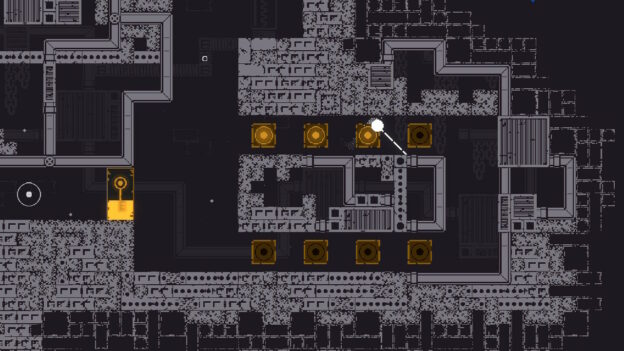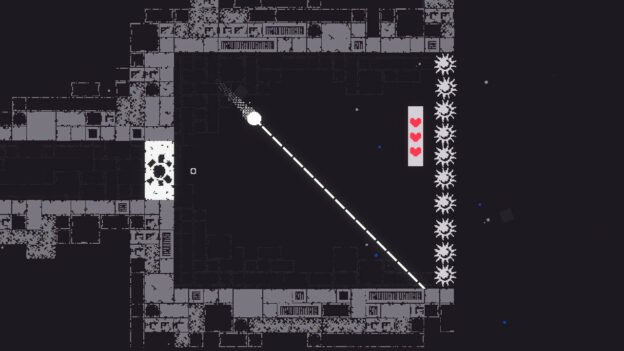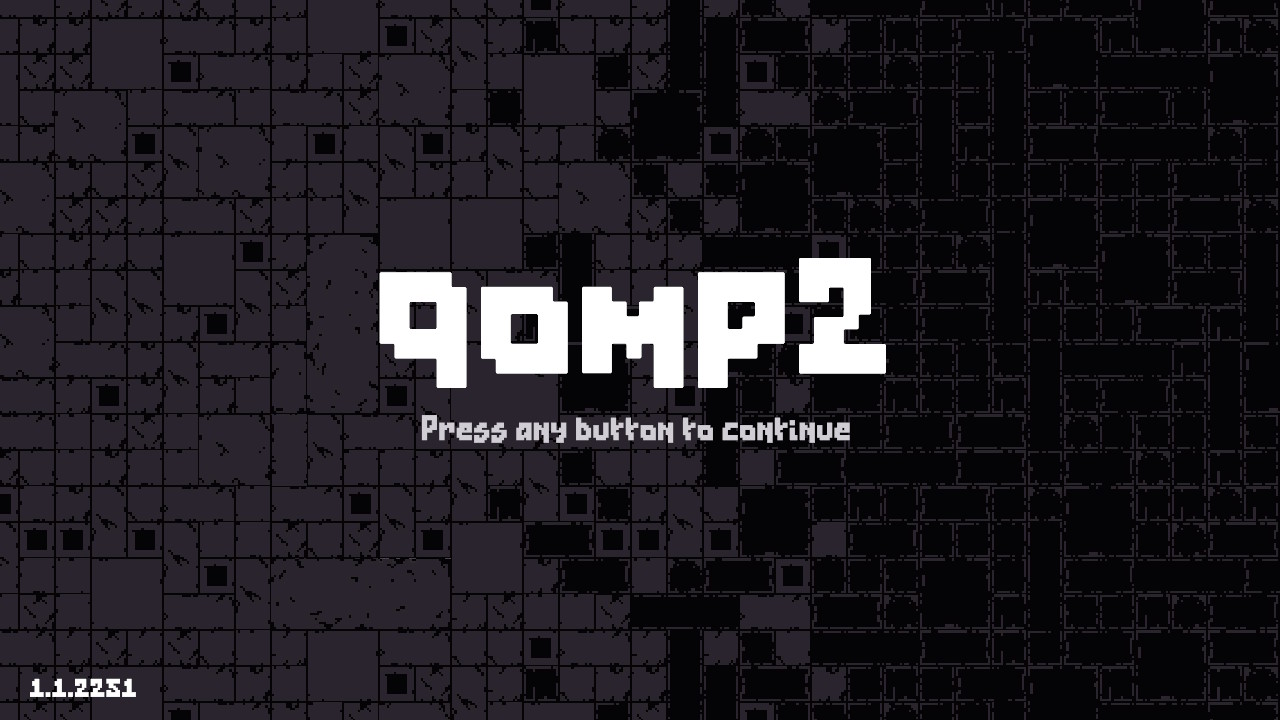qomp2 is a puzzle arcade game developed by Graphite Lab and published by Atari. This sequel is the successor to qomp, which was originally released in 2021. I never played the first game, so qomp2 is my introduction to this reimagining of Pong.
In this game, you play as Pong, the ball, attempting to break free from between the two paddles. Though it’s implied, there’s no dialogue or straight story to follow. The game begins with Pong bouncing back and forth between two paddles, introducing the dash mechanic right away. Controls are easy enough—hold ZR to charge up Pong and release to dash. The A button changes Pong’s direction, moving up or down. However, you must hit the wall if you want to turn around. While the controls are easy enough, that doesn’t mean the gameplay is simple.
Each level is like a maze with light puzzles to solve and other obstacles to bypass so you can get out and move on to the next stage. These might include spinning levers, spikes, breakable walls, wind tunnels, water, and more. It took me some time to figure out the mechanics to overcome some of these obstacles. For example, when in water, Pong moves slowly and sinks. If you want the ball to move slightly faster and upward, you must make it “swim” by tapping the A button. qomp2 does a great job personifying a ball.

The puzzles aren’t necessarily the tricky part, though. It’s the movement. Two buttons are easy to remember, but the gameplay is all about utilizing angles to manipulate where you want Pong to go. This means you might be stuck in one room for some time as you get the angle just right in order to get the ball in a specific spot. It wasn’t always easy; geometry isn’t my strong suit. Honestly, if it weren’t for the accessibility options, I probably would have rage quit.
I turned off the fish eye and screen shake because I found those to be too jarring when playing the game. Other options for accessibility included hints (which I turned on, though I never noticed what the hints were) and raycast. I turned that on since it’ll show you where your ball is headed. That helped me figure out the angles and decide where I wanted the ball to go.

It wasn’t until I got really stuck on a level that I went back into the options in a desperate attempt to see if anything else would help. I’m glad I did because another option was there: invincibility. By default, it was turned off. I don’t remember seeing that option there before, so I wonder if the game did that on purpose to ensure you try actually playing the game first, which is clever. I turned invincibility on; sure enough, nothing in the levels hurt me. I could cruise through the part I was stuck on, only having to worry about the angles and my movement. I turned the option on and off depending on when I was really stuck. I’ll admit, there was one level in World Three where I had it on for the whole level. I would have been there for ages otherwise.
It sounds like qomp2 is a long game. It is, and it isn’t. There are 30 levels total, but they’re relatively short. Sometimes, I accidentally found a shortcut to the end that allowed me to skip the entire level. There are no timers, and frequent checkpoints appear at the levels. You’ll die a lot, but it’s not unforgiving. The game also autosaves in between levels. So, you can easily pick up and play this title whenever you want. There’s one collectible in each level, adding some replayability if you don’t collect them all the first time.

After a few levels, you’ll face boss fights, which are cleverly done. For example, the first boss is a big paddle that you need to dash into a few times to kill it. The bosses get more in-depth and unique the deeper you get into the game.
Overall, qomp2 is a simple game, but it will keep you thinking. You’ll always need to be one step ahead to ensure the ball goes where you need it to. It’s challenging but not unforgiving, allowing you to retry the levels as many times as you can handle. Or, for a more casual experience, go through the whole game with invincibility on.
Review: qomp2 (Nintendo Switch)
Great
Overall, qomp2 is simple yet thought-provoking. It’s challenging but not unforgiving. With its smooth controls and accessibility options, you can play this game however you want.


